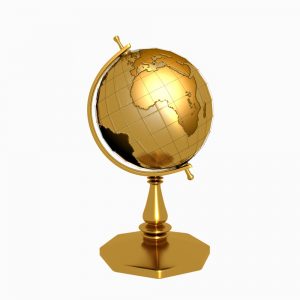

UNWTO deepens tourism cooperation with the European Union
Advancing sustainable tourism across Europe is at the center of an agreement signed today between the World Tourism Organization (UNWTO) and the European Parliament. During his first official visit to Brussels (27-28 February), UNWTO Secretary-General, Zurab Pololikashvili, met with the President of the European Parliament, Antonio Tajani, the European Commissioner for Internal Market, Industry, Entrepreneurship and SMEs, Elżbieta Bieńkowska as well as the Vice-Chair of the Committee on Transport and Tourism and Responsible for the Tourism Task Force, Istvan Ujhelyi and the representatives of the European Tourism Manifesto. Addressing the Tourism Task Force of the European Parliament Mr. Pololikashvili highlighted the need to enhance integration, connectivity and technology to maximize the role of tourism in creating jobs and stimulating growth in the European Union (EU).
Europe is the world’s leading tourism destination receiving half of the world’s 1.3 billion international arrivals. In 2017, international tourism in Europe grew 8%, one percentage point above the world average, totalling 671 million tourists.
During the signing of the agreement, Mr. Pololikashvili stressed how “the best way to ensure tourism’s positive impact for its people is by working closely with the European Parliament as the representative of the people of Europe”. “Today we are becoming stronger partners in our work to make tourism, and cultural tourism in particular, a driver of prosperity, opportunity, and better livelihoods across the EU”, he added.
UNWTO and the EU Parliament will work on promoting good practices and the sharing of knowledge and experiences on the ground. The agreement coincides with 2018 as the European Year of Cultural Heritage and is an opportunity to highlight the relevance of cultural tourism, which is an outstanding travel asset in the EU countries.
“Over the next 10 years, tourism can create more than 5 million new jobs, not least because the number of tourists is set to double to more than 2 billion. Europe must not let this opportunity pass by. Through the growth of tourism, we can offer real prospects for the new generations and boost strategic sectors of the economy, such as transport, trade, luxury goods, shipbuilding, construction, agri-foodstuffs and the cultural and creative industries” said Antonio Tajani. “We can’t just wait for this to happen by itself. We must work, including with UNWTO, to improve our competitiveness and our skills, to face the challenges of digitalisation and to promote Europe as the world’s number one tourist destination”, he added.
EU tourism and the EU-China Tourism Year
The UNWTO Secretary-General met with the European Commissioner for Internal Market, Industry, Entrepreneurship and SMEs, Elżbieta Bieńkowskaand exchanged views with the members of the Tourism Task Force of the European Parliament and withthe public and private stakeholders assembled around the European Tourism Manifesto.
On the occasion, UNWTO Secretary-General stressed the importance of working in collaboration with the European institutions on key priorities: sustainability; innovation and technology; safety and security; and education and job creation.
Addressing the EU–China Tourism Year Parliamentary Day, which celebrated the EU-China Tourism Year, Mr. Pololikashvili said “This year comes as an opportunity to make Europe the best global destination for Chinese tourists and to use tourism to increase understanding between Europe and China”.
According to the European Travel Commission, 12.4 million Chinese tourists visited the EU in 2017. With an average above one million per month and considering the prospects of growth, the impact of Chinese tourists on EU tourism is relevant factor for European tourism development and bilateral relations with China.
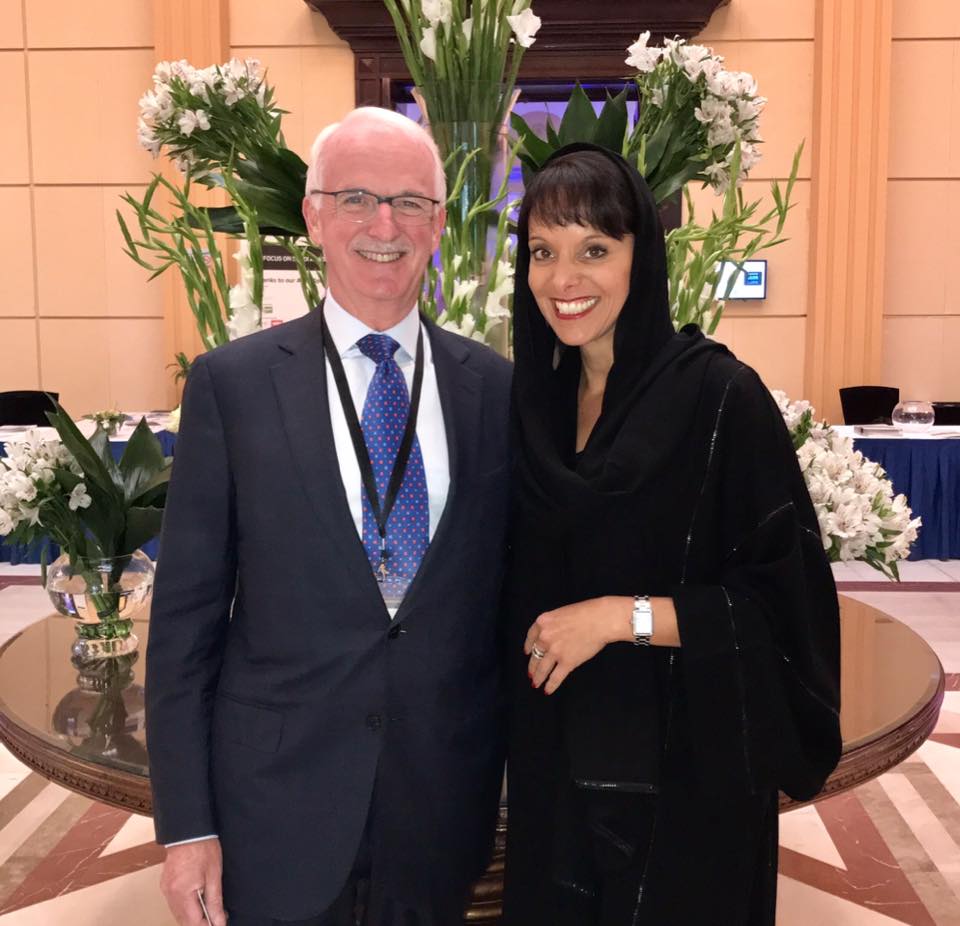
Tourism experts attended Saudi Arabia Hotel Investment Conference
Tourism leaders recently attended the Saudi Arabia Hotel Investment Conference at the Marriott Convention Centre, Riyadh Marriott Hotel on February 26.
Some of the speakers included: Dr Hamad Al Ismail, Vice President for Investment & Tourism Development, Saudi Commission for Tourism & National Heritage, Dr Badr Al Badr Chief Executive Officer, Dur Hospitality, Kamel Ajami, Vice President, Operations, KSA & Levant, Hilton, Eng. Mohammed Abdulaziz Al Nashmi, General Director of Vision Realization Office, Saudi Commission for Tourism & National Heritage, Yasser bin Faisal Al-Sharif, Chief Executive Officer, Jabal Omar Development Company, Mohamed Awadalla, Chief Executive Officer, Time Hotels, Ignace Bauwens, Regional Vice President Middle East and Africa, Wyndham Hotel Group, Dr Martin Berlin, Partner, Deals Strategy ME, Global Deals Real Estate Leader, PwC, Olivier Granet. Chief Executive Officer, Middle East and Africa, AccorHotels, Gerald Lawless, Chairman, World Travel & Tourism Council; Chairman, Irish Business Network; Honorary President, Jumeirah Group, Anita Mendiratta, Founder & President of Cachet Consulting
Following recent reforms and widespread investment in Saudi Arabia, Colliers International predicts this will drive growth in the mid-market hotel sector at a compound annual growth rate (CAGR) of 16% between 2017 and 2021.
The data was published ahead of the Saudi Arabia Hotel Investment Conference (SHIC), which took place on February 26 at the Marriott Convention Centre, Riyadh Marriott Hotel.
Highlighting the same, Time Hotels’ CEO, Mohamed Awadalla said: “As receipts from Saudi oil revenues have declined, some government departments and private companies have reduced their travel expenses which in turn has led to an increase in corporate demand for more mid-market hotels, an area of the market that has traditionally been reserved for more luxury properties.
In a bid to attract 30 million visitors annually by 2030, Saudi Arabia has also introduced recent reforms and relaxed visa regulations, while also investing generously in leisure and entertainment sector.

ICTP takes the initiative after UNWTO cancels ITB meeting on Child Protection
After UNWTO unexpectedly canceled the traditional yearly meeting of the Executive Task Group for Child Protection, this wire reached out to UNWTO members. The overall response was a disappointment by many, but there was also hope. (Click to read here)
As a last minute effort, The International Coalition of Tourism Partners (ICTP) organized an informal meeting of UNWTO Stakeholders, ICTP members and anyone interested in Child Protection in Tourism. The Nepal Tourism Board CEO Deepak Raj Jos did not hesitate one minute and opened his stand for this meeting.
So far ICTP received 27 registrations from Thailand, India, UK, Belgium, Netherlands, Zimbabwe, Germany, Pakistan, Guinea Bissau, USA, Serbia, Nepal.
Representatives from ECPAT, THE CODE, WYSE, ABTA, WSO and the Ministry of Tourism and Sports Thailand, and the International Delphic Council are planning to attend. ICTP invited UNWTO Secretary-General Zurab Pololikashvili, but so far UNWTO did not respond.
Anyone attending ITB Berlin next week is invited to participate. Registration: http://ictp.travel/itb2018/
- WHEN? Friday, March 9, 2018: 11.15h
- WHERE? ITB Berlin, Stand 5.2a / 116 (Nepal Tourism Board)
- WHO? ICTP Members, leaders of the global travel and tourism industry, associations and media.
- REGISTER: Click here
ICTP Chairman Juergen Steinmetz who is also the publisher of this newswire said: “Child Protection is too important to be ignored at the largest travel industry event in the world. I am pleased to see organizations and countries showing leadership. We are open to anyone wanting to contribute to our meeting. We are inviting anyone wanting to learn more on how to get involved. We hope UNWTO, WTTC, and PATA will consider joining us as well. Register at http://ictp.travel/itb2018/ and see you in Berlin.”
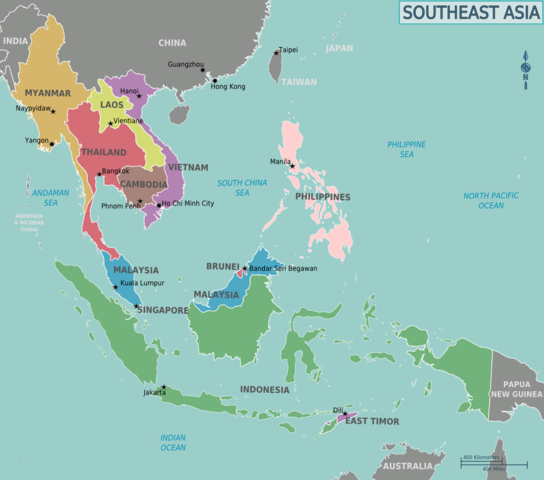
Sexual exploitation of children is an increasing concern across Southeast Asia
Outdated laws and weak legal enforcement are increasing the risk of the sexual exploitation of children across Southeast Asia says a new report.
Traditional elements of the sexual exploitation of children, such as child marriage and human trafficking continue to be an issue, says NGO ECPAT International’s “The Sexual Exploitation of Children in Southeast Asia,” which explores the phenomena in 11 countries in the region. However, the report says that this has been aggravated in recent years by a low level of awareness about the issue, along with increased regional tourism and the proliferation of the internet
“The rapid growth in tourism exacerbates the sexual exploitation of children in the region,” says the study. “Further exacerbating the situation has been the dramatic development in Internet and communications technologies, which have increased and diversified opportunities to sexually exploit children, or to profit from the sexual exploitation of children.”
ECPAT says that underlying these risk factors is a weak legal infrastructure in many Southeast Asian countries, which is allowing offenders to act with impunity. And it is not just foreigners who are to blame, perpetrators today are largely from the region. “Although tourists from Western countries are still a significant problem, it is a popular misconception that they constitute the majority of child sex offenders,” says Rangsima Deesawade, ECPAT’s Regional Coordinator for Southeast Asia. “Most offences in Southeast Asia are committed by nationals of countries in the region or other parts of Asia.”
According to the new study, whilst traditional tourism destinations such as Thailand and the Philippines continue to pose a threat to children, due to cheap travel and accommodation options, other countries such as Cambodia, Indonesia, Myanmar and Viet Nam have become popular hotpots for child sex offenders.
The report also highlights the increasing danger posed by expanding access to the Internet, which it says is imperiling children and placing them at greater risk of abuse and exploitation. It claims that the production of online child sexual abuse material in the Philippines now generates up to US$1 billion of annual revenue; some countries in the region have been identified as major hosts of child sexual abuse images; and in Lao PDR, some CD shops openly sell child sexual abuse material.
“The threat of online sexual abuse is something faced by children around the world,” says Deesawade. “And as Southeast Asia becomes increasingly connected, it becomes more connected to this global problem.”
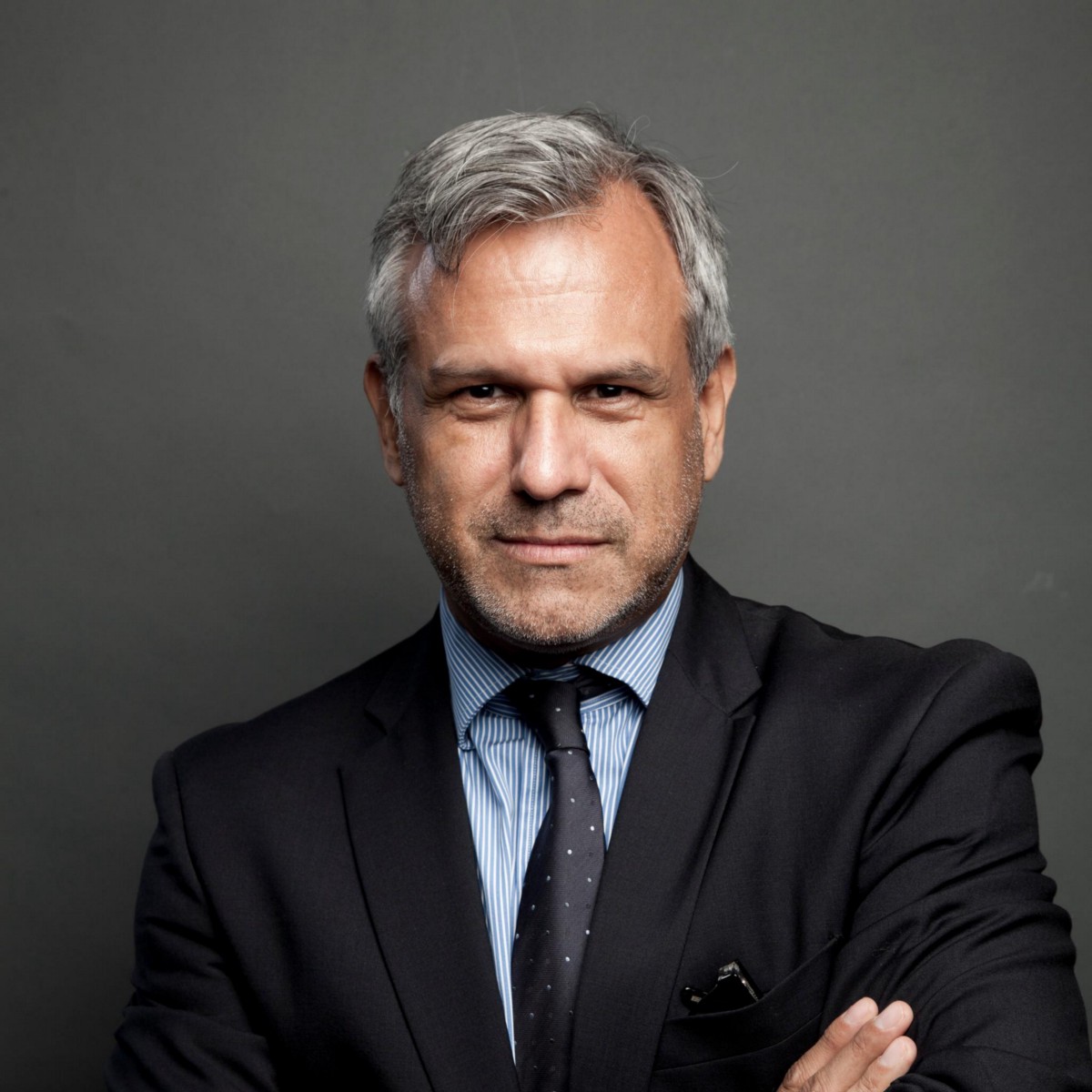
Marcelo Risi back at UNWTO as Senior Media Officer of Communications & Publications
Marcelo Risi is the new Senior Media Officer of Communications & Publications for the United Nations World Tourism Organization (UNWTO)
He took a 2 year leave of absence from UNWTO and quietly returned under the new leadership of UNWTO Secretary-General Zurab Pololikashvili.
Marcelo is a Senior communications professional with 20+ years experience in the United Nations, international organisations, global broadcasting, journalism and communications lecturer.
Development economist by training, a native speaker of both Spanish and German, bilingual in English, fluent in Italian, beginner level in Portuguese and French.
Worked as a researcher and policy analyst for international think tanks before switching to international broadcasting, fulfilling a wide range of assignments, such as economics editor, current affairs producer, the special envoy, foreign correspondent, and presenter.
He provides a global perspective to local issues, against the backdrop of a multicultural upbringing in the Americas and Europe, and years of working experience in all world regions.
He told eTN when asked why responses from UNWTO are no longer routine and difficult: ” There is a new rule of procedure and approval.”

Chinese New Year: Global celebration of culture, customs and customers
“Kung Hei Fat Choy!”
Across the globe over the period of February 16th to March 02nd, millions upon millions are seeing and saying these words with rapid follow-up of wishing one and all well in this, the Year of the Dog! Airports, art galleries, storefronts large and small, hotels near and far, restaurants, rail cars, car dealerships and candy stores, engagement points across the globe will be thoughtfully decorated in red, reaching out to the world’s Chinese population celebrating this most festive time of year.
As it began, world leaders were extending their personal greetings alongside the collective voice of the global community, watching in respectful awe as the largest human migration began. In 2018, an estimated 385 million Chinese are expected to travel to be with their loved ones, venturing out across the country, with an estimated 6.5 million travelling overseas. The scale of the movement is truly remarkable, masterful logistics managing to move massive numbers, with their masses of gifts all lovingly packed in red, across often vast distances, faster and smoother than one could ever imagine.
FROM CUSTOMS TO CUSTOMERS
As part of the Chinese New Year, Golden Week is truly a time of breathtaking cultural beauty. While regional traditions and customs may vary, the age-old spirit of the occasion remains the same. Whether young or old, rich or poor, urban or rural, hip of homely, grandparents or grandbabies, this is a time of collective honoring of the past, celebration of the present, and hope for the future.
Over the past decade, the growing appeal of Chinese citizens celebrating the weeklong Lunar New Year period by travelling internationally has been growing in appreciation by destinations. With Chinese travelers becoming bolder in their desire to capture moments through high level of activity with both their cameras and their credit cards, the value of Chinese New Year has risen exponentially. As recently published in the South China Morning Post:
“According to a report published jointly by Ctrip, the mainland’s largest online travel agency, and China Tourism Academy, a research institution under the China National Tourism Administration, the number of outbound tourists during the Lunar New Year holiday is expected to rise by 5.7 per cent from 2017 to hit an all-time high of 6.5 million this year. Just a decade ago, Lunar New Year – a festival steeped in tradition – represented high season for businesses such as restaurants, shops, garment makers and food processors. Those days are now history.”
Shopping remains a significant activity among those celebrating the festive season, both overseas and at home. China National Tourism Administration reported that within China, the Lunar New Year of 2017, with its predicted 344 million domestic travelers, saw an estimated per capita spend of Yuan 3500 (USD$ 560). The tourism sector alone is believed to have topped Yuan 423 Billion (USD$ 67 Billion) nationwide in revenues. Estimates for 2018 are in the range of Yuan 476 Billion ($75 Billion).
Unsurprisingly, spend by overseas travelers is significantly higher. Throughout the year, Chinese travelers are already recognized as the top spending tourists, spending on average three times that of other international travelers.
According to the UNWTO, the Chinese outbound market remains a force of global tourism growth and inspiration, defining the pace and direction of tourism momentum with its “ten years of double-digit growth in spending, and after rising to the top of the ranking in 2012. Expenditure by Chinese travelers grew by 12% in 2016 to reach US$ 261 billion. The number of outbound travelers rose by 6% to reach 135 million in 2016.”
On the receiving end, global destinations are rolling out the red carpet to red envelope carrying travelers from China during the Lunar New Year. With an estimated 6.5 million making their way across the globe, especially destinations such as the US, UK, UAE as well as Asian regional tourism centers, Chinese New Year has come to represent big business, providing a valuable post western Christmas/New Year boost to tourism numbers, both arrivals and spend.
CELEBRATING SINCERELY
One global tourist capital that has seen the value of Chinese New Year millions of times over is London. With VisitBritain estimating almost 350,000 Chinese visitors from China expected in the UK, London’s Evening Standard newswire is spreading the word on behalf of London’s finest retail district.
“Bosses at the New West End Company, which represents traders in and around Oxford Street, Regent Street and Bond Street, estimate that £32 million will be spent in the two weeks from Friday alone by Chinese tourists, and that the total in central London this year will easily pass the £400 million high set in 2017.”
Importantly, New West End Company echoes the greater yield of Chinese visitors who are reported to spend “an average of £1,972, which is more than three times the average for foreign tourists.”
Still, for all of the value that Chinese New Year brings to London, to any global city, the values of tourism must never be overlooked: hospitality, community, understanding, sharing, caring. Which is why keeping the spirit of celebration at the heart of city invitations to Chinese travelers looking to enjoy this festive, family time of year….and shop…is vital.
Championed by the Mayor of London, Sadiq Khan, London has been standing tall in 2018 as a leading destination recognizing and respecting the Chinese New Year holiday wishes of its visitors – their culture and tradition – during this special time. Central to the city’s spirit of hospitality has been the Mayor ensuring that the red carpet reached beyond purely retail to all corners of the city, with Chinese New Year events across London showcasing and celebrating Chinese culture, cuisine, style and spirit. Official celebrations were given rightfully grandness of proportion and profile when hosted in the city’s iconic Trafalgar Square. China’s XINHUANEWS excitedly reported to its tens of millions strong audience: “London host(ed) on Sunday the largest Chinese New Year celebrations outside Asia, attracting tens of thousands of people heading to areas around Chinatown to share the joy. Festivities began with a two-hour long Grand Parade featuring the largest gathering of over 50 Chinese Dragon and Lion teams through the streets from Trafalgar Square, via West End before reaching its final destination Chinatown.”
The message to the world was clear: London celebrates the people of China across the city and across the world, Mayor Khan himself sharing:
“Chinese New Year is always a joyous time in the city’s cultural calendar. London is open to all people and all communities. That’s why I’m so proud of the Chinese New Year festivities here in the capital, which are the largest of their kind outside of China and entertain hundreds of thousands of Londoners from all communities, as well as visitors to our city.”
Red carpets alongside red envelopes.
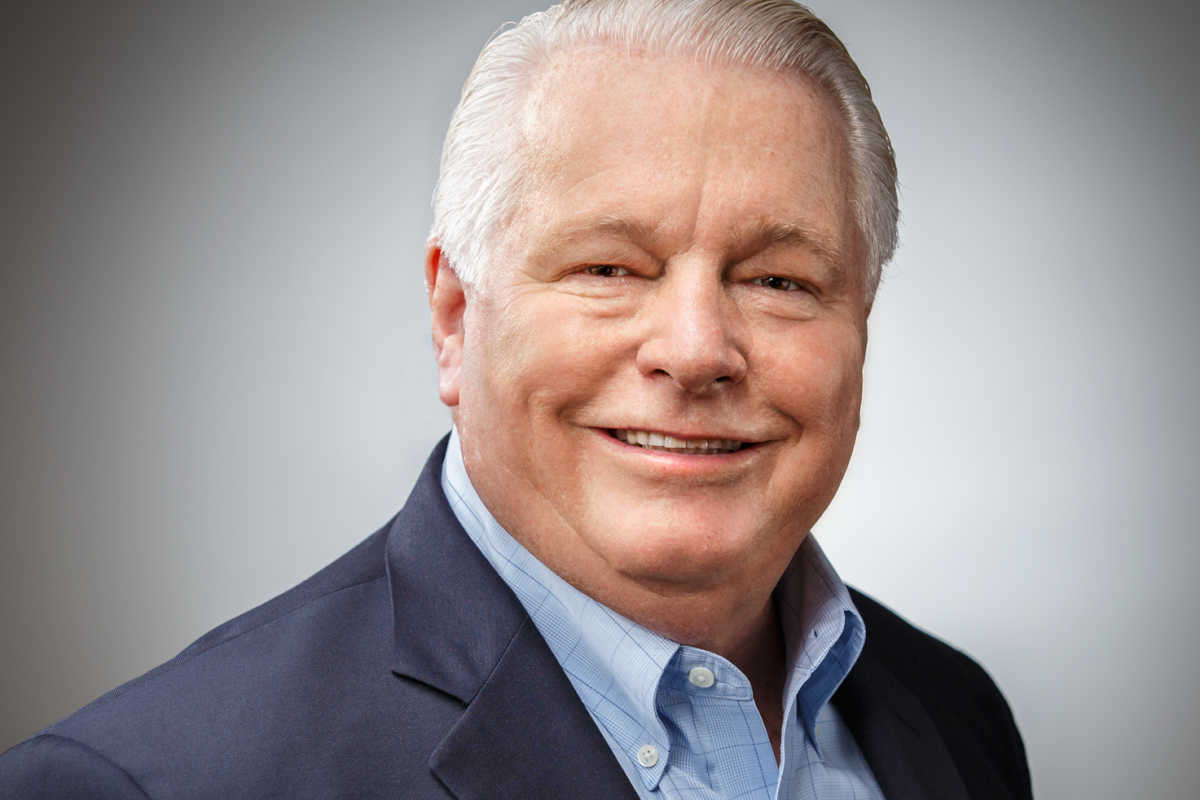
Why US Travel CEO Roger Dow is now Vice Chairman of Chinese World Tourism Alliance?
During the UNWTO General Assembly in Chengdu, another organization – the World Tourism Alliance (WTA) – was born under the leadership of Dr. Li Jinzao, Chairman of the China National Tourism Administration (CNTA).
According to the association’s website and its about statement the organization is a global organization with similar goals the United Nations World Tourism Organization (UNWTO) has. Considering the Chairman of the Peoples Republic of China personally appeared on video at the lounge congratulating Dr. Jinzao who is head of CNTA and seeing most members are from China, it appears the organization is trying to appear global under Chinese leadership. The second man recently announced as a director for UNWTO is also Chinese.
eTN talked to the Vice Chairman of WTA, Roger Dow, who is head of the US Travel Association. Mr. Dow was not able to explain what his role in the organization is nor what World Tourism Alliance is actually doing. eTN had asked repeatedly to get Mr. Dow’s input, but he had no response. When asked if this organization is trying to seal world leadership for the Chinese government in tourism politics and policies, there was no response from Mr. Dow.
His standard response is laying out the importance for the Chinese outbound market to the United States. All of this doesn’t sound very global.
Both UNWTO and WTA had not responded to eTN media questions on this issue.
According to the WTA website, the World Tourism Alliance (WTA) is a global, non-government, non-profit, international, tourism organization. Its membership covers national tourism associations, influential tourism businesses, academia, cities, and media, as well as heads of international organizations, former political leaders, retired tourism officials, heads of tourism businesses, and renowned scholars. Its headquarters and Secretariat are located in China.
Upholding the vision of “Better Tourism, Better World, Better Life” as its ultimate goal, the WTA is committed to promoting tourism for peace, development, and poverty-reduction based on mutual trust, mutual respect, mutual support, and a win-win outcome. The WTA and the UNWTO go hand in hand and stand complementary to each other, serving as double engines to drive global tourism exchanges and cooperation at the non-governmental and inter-governmental levels.
The WTA will provide professional services to its members by setting up platforms of dialogue, exchanges, and cooperation for business match-making and experience-sharing and be open to cooperation with international organizations to promote global tourism. It will establish high-level tourism research institutions and consultancies to study the trend of international tourism development and to collect, analyze, and release global and regional tourism data. It will provide planning, policy-making consultancy, and professional training for governments and businesses. It will set up a mechanism of reciprocity among its members to share tourism markets and resources and engage in tourism promotional activities. By holding annual meetings, summits, expos, and other events, it will facilitate exchanges and cooperation between government and the private sector to advance integrated development of international tourism with other industries.
Currently, the following individuals are leading the organization according to the WTA website. eTN reached out to everyone, but there is no response as to what the organization has done or what they are planning to do. One thing is sure, however, and that is the Chinese government’s tactics seem to be the style this organization is set up under and how it runs.
Here are the leaders:
Dr. Li Jinzao (China)
Founder
Li Jinzao is now Chairman of China National Tourism Administration. He graduated with a master’s degree in International Economics from the Wuhan University in 1984, and a Ph.D. in Economics from the Graduate School of Chinese Academy of Social Sciences in 1988. Dr. Li used to be in the UK and Australia as visiting scholar. He worked in the Ministry of Finance and then the National Development and Reform Commission of China and served consecutively as Mayor and Party Secretary of Guilin City, Standing Committee Member and First Vice Governor of Guangxi Zhuang Autonomous Region(Province), and Vice Minister of the Ministry of Commerce of China.
He chaired the First World Conference on Tourism for Development (2016) and the 22nd UNWTO General Assembly (2017).
Duan Qiang (China)
Chairman
Duan Qiang holds a Ph.D. in Economics of Tsinghua University, China. He was former Vice Mayor of Beijing and now Chairman of the Board of Beijing Tourism Group (BTG), one of the top tourism groups in China. BTG holds stakes in nearly 300 companies and extends its broad presence with over 1600-member companies from across the world. Shepherding one of the strongest tourism businesses in China, Dr. Duan holds considerable influence in the Chinese tourism industry and beyond. He is a NPC deputy, member of the NPC Committee of Environment Protection and Resource Conservation, and deputy to the Municipal People’s Congress of Beijing for five terms in a row. He now serves as Chairman of China Tourism Association, Vice Chairman of Cross-Strait Tourism Exchange Association, and Vice Chairman of the World Travel & Tourism Council (WTTC).
Roger Dow (America)
Vice Chairman
Before becoming President and CEO of U.S. Travel Association in 2005, Roger Dow had worked at Marriott for 34 years. He was Senior Vice President for Marriott’s Global and Yard Sales, developed the Marriott Incentive Scheme and was the first to roll out the world-leading discount program for frequent travelers. As President and CEO of U.S. Travel Association, he has contributed significantly to tourism planning and its legislation in the U.S. and played a major role in the birth of the Brand USA. He used to serve and is still serving in industry organizations such as the International Institute of Tourism Studies, U.S. Chamber of Commerce and the Committee of One Hundred, etc.
Henri Giscard d’Estaing (France)
Vice Chairman
Henri Giscard d’Estaing is Chairman and CEO of Club Med and son of former French President Valery Giscard d’Estaing. He was elected congressman of Loir-et-Cher province at the age of 22, the youngest at that time. He used to work at Danone and Evian before joining Club Med in 1997 as deputy manager for finance, development and international relations. He succeeded the resigned Philip Brinon as General Manager in 2001 and became Chairman and CEO in 2005.
Jayson Westbury (Australia)
Vice Chairman
Jayson Westbury is CEO of Australian Federation of Travel Agents (AFTA), a MBA of Australian School of Business and has 25 years of managerial experience in the tourism and hotel industry. He has been acting as executive director of AFTA since 2009, was former head and is still a Board director of the World Travel Agents Association Alliance (WTAAA), an international organization with about 56 member states from across the world. He is also on several taskforces and working groups under the federal government of Australia, contributing to the formulation and improvement of tourism policies in Australia and the rest of the world. He was awarded an Australian Tourism Champions Award in 2003 and a further recognition as an Australian National Tourism Legend in 2009 and 2011 from Tourism Training Australia.
Liu Shijun (China)
Secretary General
Liu Shijun graduated from the Tourism Department of Beijing International Studies University and holds an EMBA of Cheung Kong Graduate School of Business. He once worked as Director-General, Department of Marketing and International Cooperation of China National Tourism Administration (CNTA),Secretary-General of China Tourism Association (CTA), Counsel of the General Administrative Office, Deputy Director-General, Department of Industry Management and Standardization, Deputy Counsel, Department of Tourism Promotion and International Liaison of CNTA, and Director of China National Tourist Office in New Delhi and Sydney respectively. Mr. Liu is a veteran in tourism marketing and branding, industry management and standardization and owns rich experiences in the sector as he has worked in industry associations and overseas organizations with excellent organizational, communicative and language competence. He was represented CNTA in the Asian Association of Convention and Visitor Bureaus.
Mr. Dow from US Travel was not able to explain what the organization is doing, and why US Travel joined it, and what is role as the Vice Chairman is. When asked if the US State Department was consulted him becoming a vice chair of a Chinese government influenced organization, there was no response. Mr. Dow is not listed as a foreign agent with the US Department of State.
Instead this somehow generic and not relevant response was given:
“U.S. Travel’s mission is to increase travel to and within the United States, and our member companies and organizations look to us to identify opportunities that develop visitation growth to America. That’s why we recently became involved with the World Tourism Alliance.
“With U.S. market share declining at a time when global travel is expanding overall, America must seize every opportunity to tap into the world’s largest outbound travel markets.
“In 2016, the U.S. government forged the U.S.-China Tourism Year to ‘maximize the economic and social benefits of increased inbound international travel to the United States.’ That successful initiative convinced us that we must continue the momentum by getting involved with this new organization.
“China presently ranks among the top five source markets of visitors to the U.S., growing from 400,000 visitors in 2007 to three million in 2016. During the same period, Chinese visitor spending in the U.S. increased from $2 billion to $18 billion—the highest among all countries. In fact, travel accounts for nearly a fifth of all American exports to China. Further, U.S. jobs supported by Chinese visitor spending in the U.S. increased from 21,600 in 2007 to 143,500 in 2016.
“U.S. Travel has been at the center of several crucial moments over the past decade while working hand-in-hand with the Department of Commerce and others in the U.S. government to make it all possible, including the creation of the 10-year tourist visa and the bilateral agreement enabling inbound group travel.”
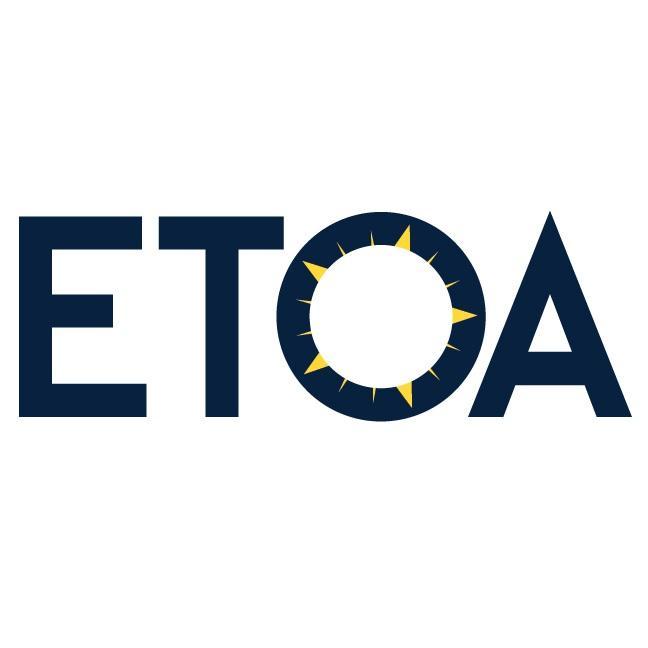
EAGLE and ETOA partner together to further enhance the collaboration opportunities between Chinese and European tourism professionals
Wednesday, 21st February 2018
EUROPE ASIA GLOBAL LINK EXHIBITIONS (EAGLE), a recently established joint venture between Italian Exhibition Group and VNU Exhibitions Asia, and ETOA – European tourism association, the leading Trade Association for Tour operators and Tourism suppliers, have signed an agreement to strengthen the international presence of their respective platforms. The partnership includes a set of promotional activities and special incentives for ETOA members to explore and increase business opportunities in the Chinese tourism market.
EAGLE, headquartered in Shanghai, is the organizer of two important tourism exhibitions held in China, Shanghai World Travel Fair, scheduled for 24th-27th May, 2018 (the 15th edition) and Travel Trade Market (TTM) which will make its debut for the first time from 5th- 7th September, 2018 in Chengdu, Sichuan. These two China based tourism events together with TTG TRAVEL EXPERIENCE, the main marketplace in Italy organized each October in Rimini by Italian Exhibition Group, create a global tourism network that facilitates the communication within the world tourism industry.
“We are thrilled to join forces with ETOA in order to build new platforms to shorten the distances for doing business in China and the Far East and give European tourism professionals a direct path to do business in these regions.” – said Mr. Corrado Facco, Managing Director of Italian Exhibition Group and Chairman of EAGLE.
Mr. David Zhong, President of VNU Exhibitions Asia and Vice Chairman of EAGLE added: “With over 10 million Chinese tourists visiting Europe each year and the increasing trend, these type of partnerships are crucial in today’s dynamic and fast changing environments. In particular, our newly launched exhibition in Chengdu, will give ETOA members the opportunity to tackle down the needs of Central and Western cities in China that show a continuously growing appetite for tourism services.”
“ETOA is involved in such EU-funded projects as World Bridge Tourism and Partnerships in European Tourism. These support tourism businesses wishing to expand their businesses into the Chinese market. We are happy to continue in this work facilitating business relationships between China and Europe. We hope this partnership will enable members to establish good contacts with the Chinese travel trade, and increase the amount of business in China and the Far East.” – said Mr. Tom Jenkins, CEO, ETOA.
More than 500 international exhibitors and over 13,000 trade visitors and buyers, mainly from East parts of China, are expected to gather together at the 15th edition of Shanghai World Travel Fair (SWTF) scheduled to take place from 24th – 27th May 2018 in Shanghai, China. The show is a B2B and B2C format that focuses mainly on the growing demand for outbound tourism from China. Whereas, Travel Trade Market (TTM) will open its doors for the first time in Chengdu, Sichuan from 5th- 7th September 2018 as a pure B2B event that covers both INBOUND and OUTBOUND tourism sectors in China. It gives international exhibitors the opportunity to meet the most qualified tourism buyers of the second and third tier cities located in the Central and Western parts of China and at the same time puts together the Chinese destinations and inbound tourism operators with buyers from all over the world.
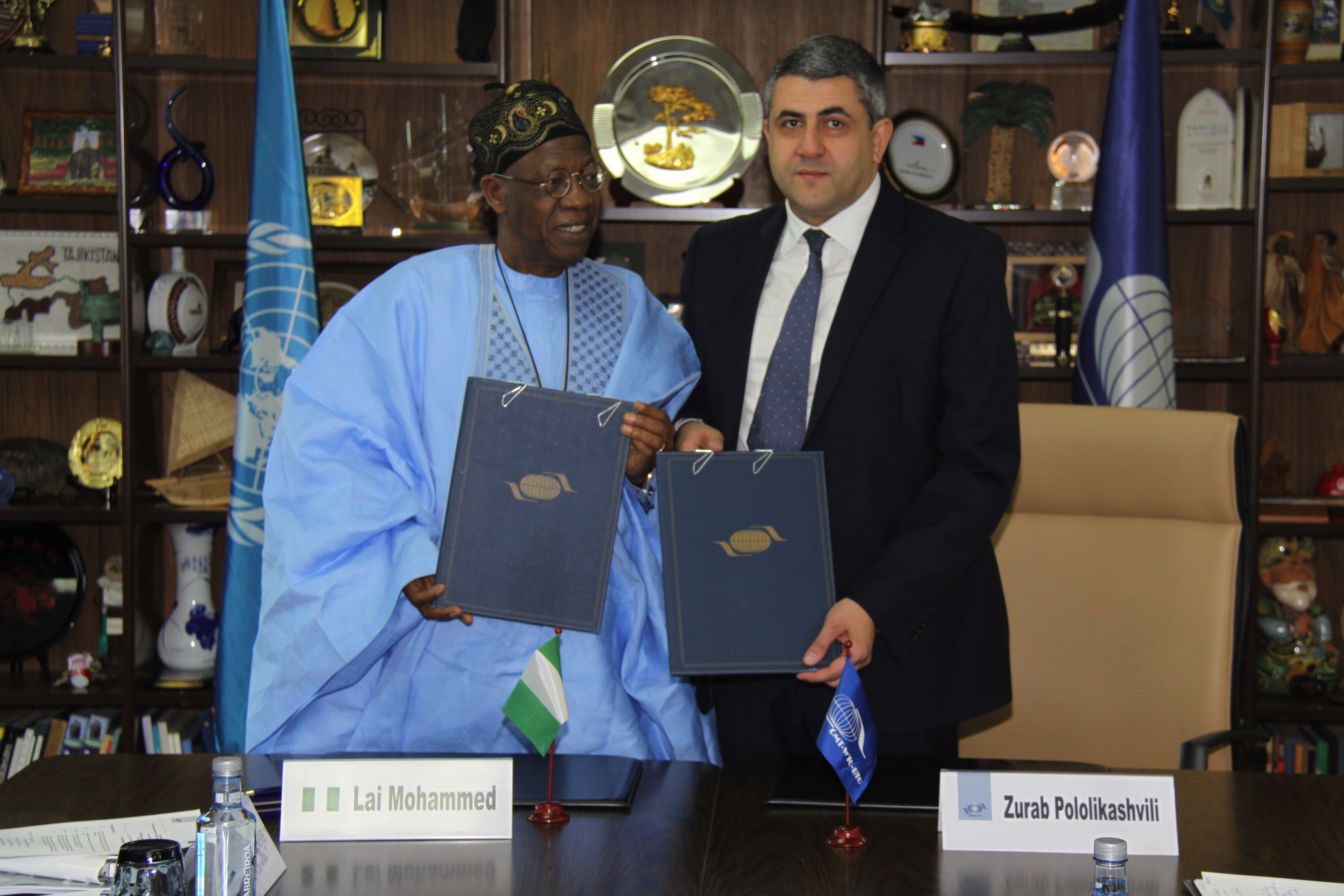
Supporting tourism development in Africa through better measurement
In an effort to better measure tourism growth and development in Africa, UNWTO signed a Cooperation Agreement with the Nigeria Tourism Development Corporation for the Strengthening of the National Tourism Statistical System of Nigeria and the Development of a Tourism Satellite Account.
UNWTO is committed to developing tourism measurement for furthering knowledge of the sector, monitoring progress, evaluating impact, promoting results-focused management, and highlighting strategic issues for policy objectives.
On the occasion of the meeting between UNWTO Secretary-General, Zurab Pololikashvili, and the Minister of Information and Culture of Nigeria, Mr. Lai Mohammed, the agreement to host the Sixty-First meeting of the UNWTO Commission for Africa and the Seminar on ‘Tourism Statistics: A Catalyst for Development’ in Nigerian capital, Abuja, from 4 to 6 June 2018, was signed.
The meetings will be open to the participation of UNWTO Member States and Affiliate Members, as well as invited delegations and representatives of the tourism and related sectors. Officials of immigration departments, national statistics bureaus, central banks and other relevant stakeholders will be invited to join
Jobs, jobs, jobs : Future of tourism in the UAE according to WTTC
Travel and tourism sector will continue to play a vital role in the UAE’s economy, giving a fillip to its GDP. The sector is estimated to create thousands of new jobs over the next eight years, thanks to a host of factors, especially new retail, leisure and entertainment offerings and medical tourism. Overall, 77,400 new jobs will come up in travel and tourism sector across the UAE. It means the number of people working in travel and tourism (T&T) sector will increase from 317,300 in 2016 to 394,700 by 2026 in the UAE, according to World Travel and Tourism Council report.
In Dubai, the number of residents working in T&T are projected to increase from 169,100 in 2016 to 223,600 by 2026, creating 54,500 new jobs in the emirate over the next eight years. This means around 12.2 per cent of people in Dubai will be working in the tourism by 2026 as against 10.8 per cent in 2016, according to the report.
“Expo 2020, expansion of the emirate’s retail, attractions, leisure and entertainment offerings, new mega projects, and further development of Al Maktoum International Airport are expected to fuel the growth in travel and tourism,” said Hamad Buamim, president and CEO, Dubai Chamber of Commerce and Industry. In addition, Buamim believes medical tourism, and meetings, incentives, conferences and exhibitions (Mice) will strengthen Dubai’s reputation as one of the world’s most sought-after tourism destinations.
“Dubai has already made considerable headway in reaching its 2020 tourism goal as the emirate welcomed a record 15.8 million international visitors in 2017. This has been supported by the rising number of visitors in recent years from key markets such as India, Saudi Arabia, the UK, Russia and China, as well as progress in diversifying source markets. I expect this growth trend to continue as UAE-based airlines expand their reach to new destinations and boost Dubai’s global profile,” Buamim said.
Laurent Voivenel, senior vice-president, operations and development for the Middle East, Africa and India, Swiss-Belhotel International, said exciting leisure, family and cultural attractions such as Dubai Opera, City Walk, IMG Worlds of Adventure, Dubai Water Canal, Dubai Parks and Resorts, Etihad Museum, La Perle by Dragone and Dubai Frame have all further added to appeal as well as contributed to steep rise in leisure tourism.
A 2017 WTTC report forecast that the sector’s contribution into the emirate’s GDP will increase from $11.4 billion, or 9.4 per cent, in 2016 to $20.9 billion, or 10.6 per cent, by 2026. Dubai currently commands 60.9 per cent share of UAE’s tourism GDP. According to WTTC, Dubai witnessed the second highest international spend of city travel and tourism of 87.6 per cent in 2016 among the regional cities.
The report said that Dubai and Abu Dhabi were the fastest growing cities outside of Asia, helped primarily by international demand.
